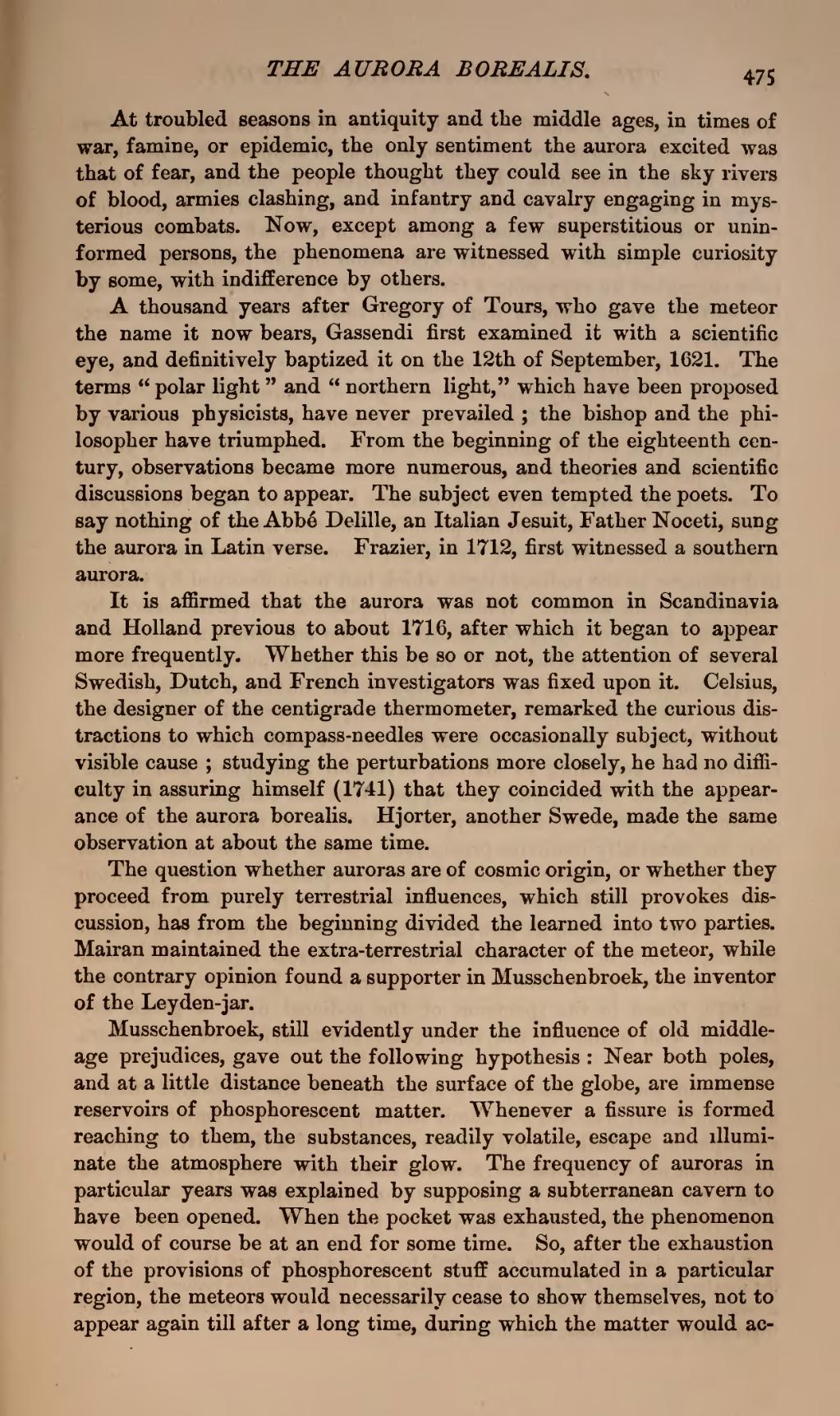At troubled seasons in antiquity and the middle ages, in times of war, famine, or epidemic, the only sentiment the aurora excited was that of fear, and the people thought they could see in the sky rivers of blood, armies clashing, and infantry and cavalry engaging in mysterious combats. Now, except among a few superstitious or uninformed persons, the phenomena are witnessed with simple curiosity by some, with indifference by others.
A thousand years after Gregory of Tours, who gave the meteor the name it now bears, Gassendi first examined it with a scientific eye, and definitively baptized it on the 12th of September, 1621. The terms "polar light" and "northern light," which have been proposed by various physicists, have never prevailed; the bishop and the philosopher have triumphed. From the beginning of the eighteenth century, observations became more numerous, and theories and scientific discussions began to appear. The subject even tempted the poets. To say nothing of the Abbé Delille, an Italian Jesuit, Father Noceti, sung the aurora in Latin verse. Frazier, in 1712, first witnessed a southern aurora.
It is affirmed that the aurora was not common in Scandinavia and Holland previous to about 1716, after which it began to appear more frequently. Whether this be so or not, the attention of several Swedish, Dutch, and French investigators was fixed upon it. Celsius, the designer of the centigrade thermometer, remarked the curious distractions to which compass-needles were occasionally subject, without visible cause; studying the perturbations more closely, he had no difficulty in assuring himself (1741) that they coincided with the appearance of the aurora borealis. Hjorter, another Swede, made the same observation at about the same time.
The question whether auroras are of cosmic origin, or whether they proceed from purely terrestrial influences, which still provokes discussion, has from the beginning divided the learned into two parties. Mairan maintained the extra-terrestrial character of the meteor, while the contrary opinion found a supporter in Musschenbroek, the inventor of the Leyden-jar.
Musschenbroek, still evidently under the influence of old middle-age prejudices, gave out the following hypothesis: Near both poles, and at a little distance beneath the surface of the globe, are immense reservoirs of phosphorescent matter. Whenever a fissure is formed reaching to them, the substances, readily volatile, escape and illuminate the atmosphere with their glow. The frequency of auroras in particular years was explained by supposing a subterranean cavern to have been opened. When the pocket was exhausted, the phenomenon would of course be at an end for some time. So, after the exhaustion of the provisions of phosphorescent stuff accumulated in a particular region, the meteors would necessarily cease to show themselves, not to appear again till after a long time, during which the matter would ac-

